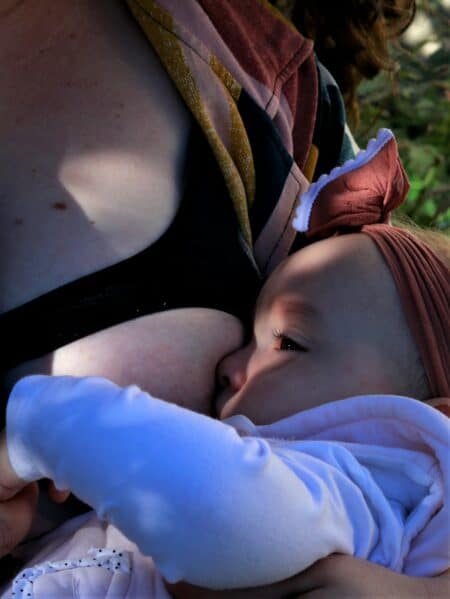
Breastfeeding or bottle-feeding? This is the first puzzle you faced as a young parent. You’ve decided to breastfeed because you want to feed your baby naturally. No sooner have you made your decision than you are asked if you want to breastfeed on demand! You mumble a weak yes, maybe… well no… only if baby is hungry. Your little one has not yet swallowed his first sip of colostrum that you hear until when you will feed him on demand? Don’t worry, at SOS Parent, we’ll help you see things more clearly. Breastfeeding should be an act of nourishment, but also an act of love and a cuddly moment between you and baby. Trust us, we will help you.
What is breastfeeding on demand?
As its name indicates, breastfeeding on demand is the fact of offering your breast to baby as soon as he feels the need to feed. Children, especially infants, live on a very different rhythm from us adults. In fact, their sleep and wakefulness phases evolve over a 25-hour period, alternating every 3 or 4 hours. Digestion and stomach emptying are also much faster. On average, breast milk is digested in one hour, while an adult’s food bowl will take 4 hours to digest. It is therefore natural for the baby to ask for his food every two hours in general. He needs to be fed 8 to 12 times every 24 hours.
However, the baby may need to suckle before this time. Milk has a nutritional role, but not the only one. It keeps baby hydrated, and suckling can calm and reassure baby.
If there’s one thing to remember, it’s that if baby wants the breast, he needs it. Offering breastfeeding on demand to your baby is a way to ensure that you meet physiological needs that he cannot satisfy on his own.
How to recognize baby’s hunger signals?
Ideally, on-demand breastfeeding starts before baby has to cry to signal his hunger. With a little practice and observation, you’ll be able to decode your baby’s body language. Before the crying and sobbing start, there are certain signals that should alert you. Your baby, who until now has been calm and relaxed, starts to fidget and stretch in all directions. He pushes on his legs and stretches his arms. His eyes move, too, trying to locate the roundness of your nipple. He will turn his head from side to side in search of a nurturing breast. He may grab his hand or fingers and start sucking on them eagerly. When a pacifier is brought to his mouth, he will pounce on it. Finally, he will make loud sucking noises, sucking on his tongue or anything else that comes near his mouth. If the message is still not understood, baby will cry and you will have to soothe him to be able to feed him calmly.
How long should I keep breastfeeding on demand?
There is no definitive answer to this question. When you are hungry or thirsty, you can get up, walk around, open your fridge or faucet to get a glass of water or snack. Baby can’t, baby is dependent on you for survival. Breastfeeding on demand is therefore essential.
It is important to know that a mother who produces just enough milk for her baby can see her breastfeeding dry up if she extends the time she waits between two feedings. It is important to respect the baby’s physiological needs. During the diversification of food, baby will enrich his diet and the mother’s body will adapt by producing less milk. Weaning from breastfeeding must be done naturally by the baby. Our body, like a well-oiled machine, serves exactly what it needs and in the right quantity. When baby no longer feels the need to be fed on demand, you will simply produce less or more milk. Trust your instincts, trust your baby.

